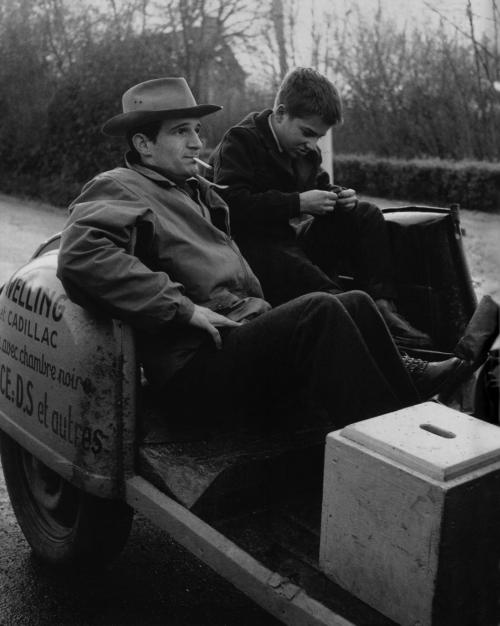cinephiliabeyond: Behind-the-scene photos from François Truffaut’s The 400 Blows (Les 400 coups, 1
cinephiliabeyond: Behind-the-scene photos from François Truffaut’s The 400 Blows (Les 400 coups, 1959) by André Dino, December 1958 © MK2/André Dino. Courtesy of Philippe Theophanidis’ aphelis.net The notorious enfant terrible of film criticism, feeling no restraint as he butchers trends and practices in contemporary filmmaking that he feels devalue the noble and responsible profession. A dedicated interviewer, whose insightful and detailed conversations studiously examine some of the greatest filmmakers’ work. A passionate, sensitive, visionary film director, whose work is still taught and dissected at countless film schools around the globe. The man who lived and breathed cinema to the degree of becoming a personification of the wonderful art. François Truffaut, one of the founding pillars of the French New Wave, still radiates inspiration and love for the craft from the movies deemed seminal for European cinema, such as The 400 Blows, Jules and Jim, Shoot the Piano Player, The Wild Child, Day for Night, Two English Girls, The Woman Next Door and many more. His love for film started to develop as early as at the age of eight, upon seeing Abel Gance’s Paradis Perdu. His entry into filmmaking actually came from film criticism. A troubled youth, an only child in a loveless marriage who spent the first part of his life living with his grandmother and going to great distances to spend as little time as possible at his unhappy home, Truffaut enlisted in the army, only to be arrested as he tried to desert it. His friend Andre Bazin used his political connections to get him released and stationed him at his film magazine Cahiers du cinema. Truffaut spent the following years honing his writing skills, receiving region-wide attention with his essay called A Certain Trend of French Cinema, in which he assaulted the common filmmaking practices of people commonly regarded as the leading French filmmakers of the time. His ruthless reviews gained him the nickname of The Gravedigger of French Cinema, but after some time he decided to try making his own movies. His first feature film, The 400 Blows, got him a Best Director win at Cannes, as well as a Best Original Screenplay Oscar nomination, and Europe gained a new filmmaking prospect: a passionate intellectual who proved he could walk the walk. He wished to make thirty movies and then retire, dedicating his time to writing. Tragically, these plans were obstructed by a brain tumor, which sent Truffaut to the Montmartre Cemetery at the age of only 52. Today we’re presenting you with a rare interview with François Truffaut published in the December, 1973 edition of the invaluable FILMMAKERS NEWSLETTER magazine. Filmmakers Newsletter was a well-respected magazine with articles abounding in technical information, as well as extensive analyses of both contemporary films and those who played significant roles in the historical development of the art and business. In an extensive conversation with journalist Suni Mallow, Truffaut discusses the making of his Day for Night, why he chose and waited so long to make a film about filmmaking, his general creative and practical process of making movies, his brilliant book made out of his conversations with Hitchcock (a must read!), how satisfied, as an experienced film critic, he truly is with his work, and more. There’s really no need for us to spoil any of the pleasures within the article–please take a peak and treat yourself to the thoughts and ideas of one of the greatest. A Conversation with François Truffaut: A Window into the Mind and Practices of the Pillar of the French New Wave -- source link

